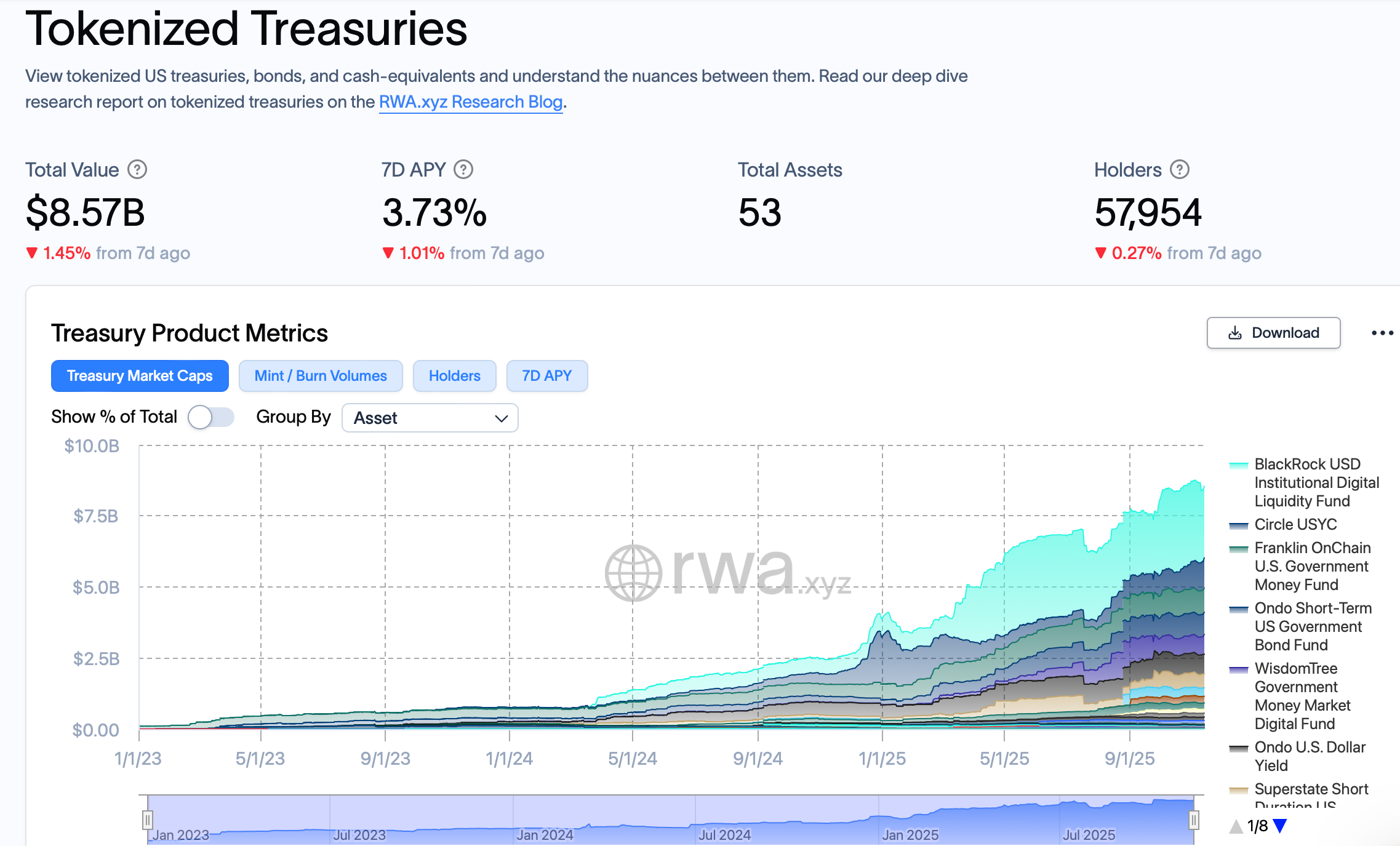Binance has integrated BlackRock’s BUIDL tokenized fund as off-exchange collateral, allowing institutional traders to use yield-bearing assets while trading on the platform. This move expands real-world asset options and supports seamless custody integration.
-
Binance now accepts BlackRock’s USD Institutional Digital Liquidity Fund (BUIDL) for trading positions, combining onchain yield with exchange custody.
-
BUIDL launches as a new asset class on BNB Chain, broadening its utility beyond Ethereum for diverse onchain applications.
-
The integration aligns with a $8.57 billion tokenized US Treasurys market, where BUIDL leads with $2.52 billion in value according to RWA.xyz data.
Discover how Binance BUIDL integration revolutionizes crypto trading with BlackRock’s tokenized Treasurys. Earn yield on collateral while trading—explore the rise of RWAs today. (142 characters)
What is Binance’s Integration with BlackRock’s BUIDL?
Binance BUIDL integration enables the exchange to accept BlackRock’s USD Institutional Digital Liquidity Fund as collateral for off-exchange trading activities. This development allows institutional users to maintain their assets with trusted custodians while leveraging them on Binance for positions. Launched via a recent announcement, it merges traditional finance stability with blockchain efficiency, supporting yield generation on idle funds.
The process integrates BlackRock’s onchain money market fund directly with Binance’s custody infrastructure. Traders can now post BUIDL to back derivatives or spot trades without transferring assets to the exchange, reducing counterparty risks. This step forward highlights the growing convergence of centralized exchanges and tokenized real-world assets (RWAs), providing low-volatility options in volatile markets.
How Does Tokenized Treasury Collateral Benefit Institutional Traders?
Tokenized treasury collateral like BUIDL offers institutional traders a secure, yield-bearing alternative to traditional cash or stablecoins. Backed by US Treasurys, these assets generate interest—typically around 4-5% annually—while maintaining liquidity for trading. According to data from RWA.xyz, the tokenized US Treasurys sector has reached a market capitalization of $8.57 billion, underscoring its appeal.
Experts note that this setup mirrors traditional triparty collateral systems used by banks, where assets remain with custodians but support exchange activities. For instance, BlackRock, managing over $13.4 trillion in assets as of Q3 2025, positions BUIDL as its flagship onchain product. “This innovation bridges the gap between TradFi and DeFi,” stated a BlackRock spokesperson in a recent interview, emphasizing reduced settlement times and enhanced capital efficiency.
Supporting statistics show BUIDL holding $2.52 billion in total value, outpacing competitors like Circle’s USYC at $1.06 billion and Franklin Templeton’s BENJI at $850 million. By enabling off-exchange collateral, platforms like Binance minimize asset movement, lowering operational costs and compliance burdens for qualified investors.
Binance’s move follows similar adoptions by other exchanges. In July, Deribit and Crypto.com integrated BUIDL, allowing low-volatility backing for positions. September saw Bybit support QCDT, a DFSA-approved tokenized fund. These developments signal a broader industry shift toward RWAs as mainstream collateral, with tokenized funds evolving from niche yield products to essential trading tools.

Source: RWA.xyz
The rise of these assets reflects traditional finance practices, where Treasurys and money-market funds serve as pledged collateral through secure systems. On blockchain, tokenization adds transparency and 24/7 accessibility, appealing to global institutions navigating crypto’s regulatory landscape.
Binance now supports a range of yield-bearing tokenized assets beyond BUIDL, including Circle’s USYC and OpenEden’s cUSDO. This diversification strengthens its position as a leader in RWA integration, catering to sophisticated traders seeking stability amid market fluctuations.
Issued through Securitize, BUIDL represents BlackRock’s entry into blockchain-based liquidity solutions. Securitize, a key player in tokenization, recently announced plans for a public merger backed by BlackRock, valued at $1.25 billion, further validating the sector’s momentum.
Frequently Asked Questions
What Does Binance BUIDL Integration Mean for Crypto Trading?
Binance BUIDL integration allows users to use BlackRock’s tokenized fund as collateral without on-exchange custody, earning yield on US Treasury-backed assets. This supports efficient trading for institutions, reducing risks and costs while expanding RWA options on the platform—ideal for derivatives and margin positions.
Is BlackRock’s BUIDL Available on Multiple Blockchains Now?
Yes, BlackRock’s BUIDL is now launching on BNB Chain alongside Ethereum, increasing its accessibility for onchain applications like DeFi protocols and lending. This multi-chain approach enhances liquidity and interoperability, making it easier for developers and traders to utilize the fund across ecosystems.
Key Takeaways
- Enhanced Collateral Options: Binance BUIDL integration introduces yield-bearing RWAs, allowing institutions to trade with stable, interest-generating assets like tokenized Treasurys.
- Market Growth Insights: Tokenized US Treasurys hold $8.57 billion in market cap, led by BUIDL at $2.52 billion, signaling strong adoption per RWA.xyz analytics.
- Future Implications: Expect more exchanges to follow, bridging TradFi and crypto—monitor platforms like Deribit for similar RWA expansions to optimize your strategies.
Conclusion
The Binance BUIDL integration underscores the accelerating adoption of tokenized treasuries as vital collateral in crypto trading, blending BlackRock’s institutional-grade assets with blockchain efficiency. As the RWA sector, including funds like USYC and BENJI, continues to mature, it promises greater stability and yield opportunities for traders. Institutions should explore these tools to capitalize on the evolving landscape, positioning themselves for sustained growth in the tokenized asset economy.
